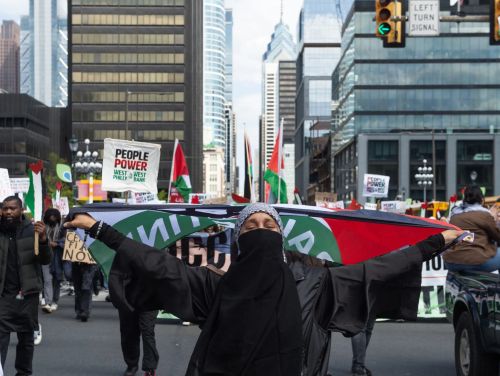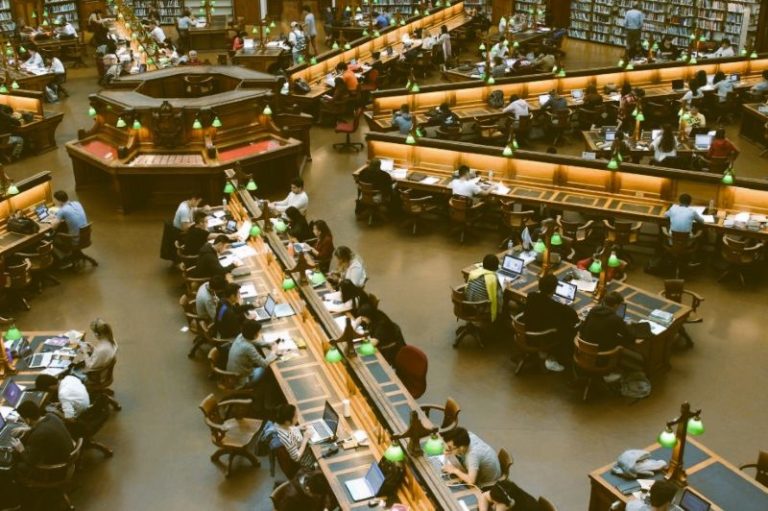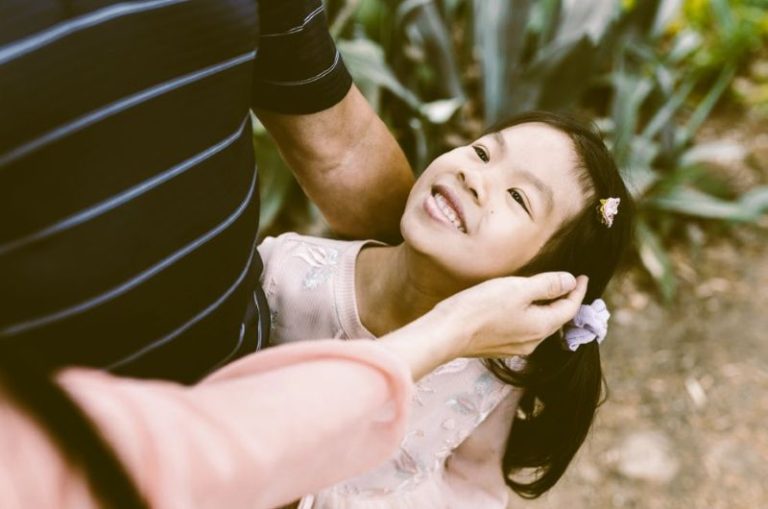

They are monitoring student activists like never before.

By Sophie Hayssen
Journalist, Editor, and Fact-Checker
“Prism is an independent and nonprofit newsroom led by journalists of color. We report from the ground up and at the intersections of injustice.”
Introduction
In the aftermath of pro-Palestinian encampments last year, colleges across the country announced new policies that effectively ban many forms of protest. In addition to chilling dissent, the new university rules also allow for campus surveillance and overreach by law enforcement.
As part of the new policies, some universities outright ban encampments, while others place restrictions on the time, place, and shape protests can take. In some cases, schools made it more difficult for students to conceal their identity during protests by banning masks or requiring student groups to register protests. Students say the new policies are alarming, especially when coupled with the surveillance utilized by universities. This includes closed-circuit television (CCTV), facial recognition, and video analytics that can track individuals.
The Electronic Frontier Foundation noted that the proliferation of surveillance technology and an increase in law enforcement on campus may require students to make difficult choices to avoid doxxing and other forms of retribution for merely exposing their faces at a campus protest.
“The more rules you create that make something illegal, the more reasons the government has to survey, get warrants, knock on doors,” said Xavier T. de Janon, the director of mass defense at the National Lawyers Guild.
Surveillance Tools Targeting Students
In an August 2024 report released in partnership with the National Lawyers Guild, the Electronic Frontier Foundation warned future student protesters about the risks of university surveillance, noting how schools could use WiFi access or keycard swipes to track student movements. The organizations also urged students to be wary of posting on social media, given universities’ use of social media monitoring software. Navigate360, a popular social media monitoring tool that was previously known as Social Sentinel, even marketed itself as a tool for colleges to respond to protests.
In some cases, school officials are attributing a general increase in campus security to concerns about mass shooters. Schools like the University of North Carolina-Chapel Hill and Michigan State University touted heightened security measures after recent school shootings. However, students assert that schools must balance safety with respect for privacy. According to Palestine Legal staff attorney Tori Porell, finding the line between student safety and surveillance requires that schools consider how they’re deploying technologies and who is targeted.
Since the explosion of encampments last year, police at several universities have used surveillance tools to investigate pro-Palestinian campus vandalism, sparking concern from students and lawyers.
At the University of Pennsylvania, campus police and local law enforcement used surveillance tactics and search warrants to justify an October raid on the off-campus home of a student organizer after activists splattered red paint on a statue of Ben Franklin. The university’s student newspaper, The Daily Pennsylvanian, reported that before the raid, officers identified suspects via CCTV footage and campus WiFi logins. They then obtained a search warrant for the students’ phone records.
Last November, campus and local police in Virginia raided the homes of two Palestinian American students from George Mason University for alleged graffiti. Authorities found firearms belonging to the students’ brother and father and claimed there were also armbands with writing in Arabic that called for the death of Jews and Americans. An attorney for the family disputes the translation. After the raid, officials from George Mason also issued trespass orders against the students, effectively barring them from campus. The orders still stand, even though the students have not been charged with a crime or accused of specific university student conduct violations. The family still does not know what led law enforcement to raid their homes.
Many students are also learning that search warrants can expose wide swaths of data to law enforcement and that warrants can be executed without the suspect’s knowledge. In the fall, students at the University of California, Santa Barbara (UCSB) had the rare opportunity to fight back when campus police obtained a warrant to search the Instagram accounts of two pro-Palestine student groups. The police claimed the groups’ social media linked them to the takeover of a school building where police alleged students committed vandalism, wore masks to evade police, and kidnapped janitors. According to the American Civil Liberties Union (ACLU), the warrant would have enabled the UCSB police to access a range of data from both the people running the accounts and users who followed or interacted with their content. Students only learned of the warrant because Meta alerted them to law enforcement’s proposed search.
Addison Steele, an attorney for one of the students potentially affected by the warrant, argued there was no probable cause for the search because the felony charges—vandalism and kidnapping—could not be linked to the accounts. Steele seemed particularly outraged by the kidnapping charge, which stemmed from a janitor hiding in a closet and another being escorted out of the building when student protesters refused to leave.
“By the farthest stretches of the imagination, that is not a kidnap,” Steele said. The judge ultimately sided with Steele and the students, concluding the warrant had no probable cause.
“I believe [the police] were trying to get a membership list of people that had engaged in constitutionally protected political speech,” Steele said.
In an emailed statement, a UCSB spokesperson told Prism that the university “has a long-standing commitment to academic freedom, free speech and expression, and the right to civil protest,” and that the warrant “was part of a criminal investigation into the unlawful occupation of a building on campus.” The spokesperson also noted that the university “acknowledges the court’s most recent decision concerning the warrant’s breadth of scope.”
Whose Safety?
It’s challenging to know the extent to which schools coordinate with outside authorities to police their students, though there is plenty of evidence to suggest it’s happening relatively frequently.
In a December 2023 report focused on campus safety during the “Middle East conflict,” the Department of Homeland Security (DHS) clarified its intentions to work with universities. Authored by the Homeland Security Academic Partnership Council, an advisory group bringing together DHS officials with university leaders, the report called for colleges to collaborate with their local fusion centers. These state-run intelligence hubs have a controversial history of targeting protesters and people of color—and so does DHS, the agency that encompasses Immigration and Customs Enforcement and Customs and Border Protection, federal agencies responsible for carrying out immigration enforcement.
Other proposals from the agency recommended that universities partnering with DHS work with the International Association for Campus Law Enforcement Administrators (IACLEA) to weaken restrictions on communication between DHS and private universities and to establish a database with DHS intelligence information on the IACLEA website. It’s unclear, though, if any of these plans came to fruition.
John Ojeisekhoba, an IACLEA board member and co-chair of the subcommittee, denied Prism’s request for an interview, stating he was “not authorized to speak on any outcome of the previous subcommittee’s work.” Ojeisekhoba directed Prism to DHS, which did not respond to multiple requests for comment.
Some schools appear to have relied on DHS and its resources to contain campus protests. The 2023 annual DHS report revealed that, during campus protests at Ohio State University, CCTV was used by university officials to create a data and intelligence hub with real-time updates by way of HSIN Connect, a web conferencing tool commonly used by fusion centers. An investigation by journalist Theia Chatelle found that Yale University received bulletins from fusion centers and used the information to trace the origins of pamphlets found at protest sites. Yale also communicated and received bulletins from Security Communities Network (SCN), described by one of its leaders as the “Jewish community’s own [Federal Bureau of Investigations] and Department of Homeland Security.” Over the summer, SCN partnered with the controversial Zionist organization Hillel International on Operation SecureOurCampuses, which involves around-the-clock intelligence analysis of college campuses.
To better understand the specifics of this initiative, Prism reached out to both Secure Communities Network and Hillel International multiple times, but neither responded.
Despite the opacity of government agencies, universities, and private groups, available information highlights how policies intended for safety can lead to overreach and expose marginalized groups and student activists to greater surveillance. The potential for overreach only heightens when it’s unclear who universities are collaborating with and what tools are at their disposal.
“It comes back to the question of: safety for who?” said Porell.
Originally published by Prism, 02.26.2025, republished with permission.


